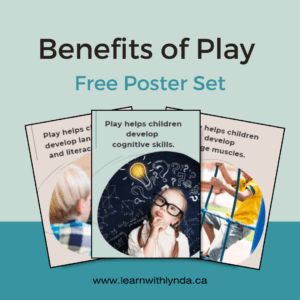Play is the foundation of early learning, and one of the most effective tools in a child’s development is a simple set of blocks. These versatile toys offer a range of benefits that go far beyond mere entertainment. Incorporating block play into your classroom or home can be a powerful way to foster essential skills for your young learners.
Playing With Blocks Benefits
1. Matching Colours, Shapes, and Patterns
Blocks come in a variety of colours, shapes, and patterns, providing children with the opportunity to engage in matching activities. Children recognize and differentiate between different attributes which lays the groundwork for early mathematical concepts. Through play, children can explore how certain shapes fit together or how patterns can be repeated, strengthening their cognitive abilities.
2. Developing Fine Motor Control
Stacking and aligning blocks requires precision. This activity is important for developing fine motor skills. Fine motor skills development is important for writing, buttoning clothes, or using scissors. The simple act of grasping, lifting, and placing blocks helps children refine their hand-eye coordination and control.
3. Counting and Sequencing
Blocks are excellent tools for introducing basic math concepts like counting and sequencing. As children play, they can practice counting the number of blocks they have, arranging them in specific orders, or even creating simple patterns. These activities help consolidate their understanding of numbers and sequences, which are foundational skills for future mathematical learning.
4. Planning and Problem Solving
Children often set out to build specific structures when they are playing with blocks. This requires them to plan ahead, think critically, and solve problems as they arise. For example, if a tower keeps toppling over, a child must figure out how to rebuild it. These problem-solving experiences are invaluable in developing logical thinking and resilience.



5. Learning About Parts and Whole
Blocks naturally lend themselves to lessons about parts and wholes. A child can break down a large structure into smaller components or combine individual blocks to form a larger whole. This understanding will be important for later learning in math and science.
6. Developing Concentration and Persistence
Building with blocks often requires a significant amount of focus and persistence.
Whether it’s constructing a complex design or carefully balancing a tower, children learn the value of concentration and the importance of sticking with a task until it’s completed. These skills are essential for success in both academic and everyday tasks.
7. Developing Spatial Reasoning
Spatial reasoning, or the ability to understand and manipulate shapes and spaces, is an important skill that is enhanced through block play. As children figure out how to fit blocks together or how to create three-dimensional structures, they are honing their ability to visualize and manipulate objects in space. This skill is not only important for geometry but also for everyday activities like navigating environments or assembling objects.
8. Seeing Pieces from a Different Perspective
Playing with blocks encourages children to view objects from various perspectives. Children may start by building something from one angle and then discover new possibilities by looking at it from another side. This ability to see things from different viewpoints is essential in developing creativity, flexibility, and problem-solving skills.



Incorporating block play into your child’s day provides a wealth of benefits that support cognitive, physical, and emotional development. By offering children the opportunity to explore, experiment, and create with blocks in our classrooms and homes, fosters a range of essential skills that will serve as a strong foundation for future learning. Blocks may be simple toys, but their impact on a child’s development is far-reaching.
Happy Learning
Lynda
P.S. Do you have these posters yet?






